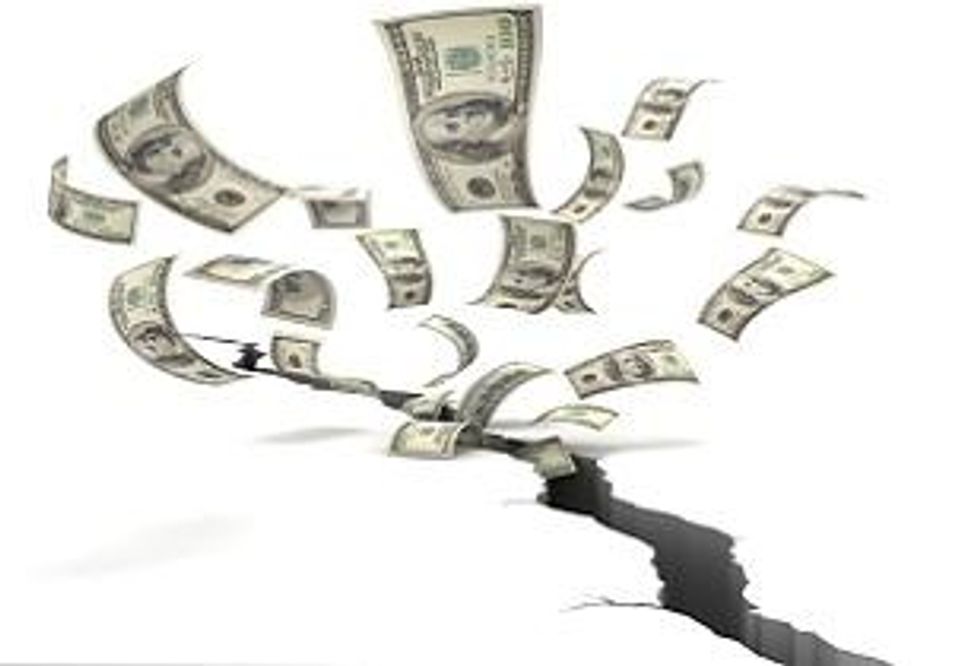Certain commodities are positioned to withstand the aftermath of the natural disaster and ensuing nuclear threats. Copper is one of the top picks. In an interview with Copper Investing News, Wayne Atwell, Managing Director at Casimir Capital L.P., discussed his outlook for the performance of copper, zinc and aluminum.
By Leia Michele Toovey- Exclusive to Copper Investing News
The ongoing reports of nuclear disaster in the wake of the Japanese earthquake has paralyzed the markets. Wednesday morning, the EU Energy Chief reported that “The Japan situation has the potential to be a major disaster.” The statement sent the global markets reeling, with the Dow shedding 110 points in just four minutes. Shortly after, the Fed canceled its 11:00 a.m. bond purchase, citing “market volatility.” Soon after, the Fed rescheduled the auction for an hour later.While the situation in Japan has sent markets down across the board, certain commodities are positioned to withstand the aftermath of the natural disaster and ensuing nuclear threats. Copper is one of the top picks. In an interview with Copper Investing News, Wayne Atwell, Managing Director at Casimir Capital L.P., said that his top picks for the metals performance are zinc, copper, and aluminum. Patricia Mohr, Vice President at Scotiabank told Copper Investing News that “Copper and zinc will do quite well during the recovery, as these metals will be widely used in the reconstruction.”
The earthquake and tsunami have caused catastrophic damage in north-eastern Japan. So far, more than 12,000 people have been reported missing or dead. Infrastructure, including nuclear plants, cars and buildings were badly damaged or destroyed. Current estimates are that rebuilding will cost $120-$150 billion.
Yesterday, Mitsubishi Materials Corp (MMC) announced that it has declared force majeure on deliveries to its Onahama copper smelter in Japan. When asked what the potential impact on copper will be if more smelters declare force majeure, Wayne Atwell stated “Copper will skate by because we are in a deficit. Worst case scenario, we have a copper market in deficit, if Japan curtails copper shipment all that will happen is that the market will be in less of a deficit. Zinc and aluminum, however, which are in surplus, will have a bigger surplus.” Finance ministry data shows that Japan imported 5.4 million tonnes of copper concentrate in 2010, up from 4.8 million tonnes the year before, while imports of aluminum were 2 million tonnes, compared with 1.5 million tonnes. Chinese copper smelters are currently operating under capacity, and various traders believe that any copper not claimed by Japan could easily be diverted to China.
Meanwhile, power cuts have resulted in a rapid decline in business activity. Operations at Japan’s top copper smelter, Pan Pacific Copper Co.’s Hitachi, as well as at Mitsubishi Materials Corp‘s (TYO:5711) Onahama plant have stopped. Two zinc smelters have also been shut for checks. There is no word yet as to when any of these smelters will reopen.
Rolling black outs have resulted in a near stand-still of steelmaking. Toyota Motor Co. (TYO:7203) said it would suspend production at all its domestic car plants until at least March 16, reducing output by at least 40,000 vehicles. Honda (NYSE:HMC) said its Japan plants would remain shut until March 20. Despite the tentative restart deadlines, one trader commented “With continued powerful aftershocks, followed by widespread tsunamis, or earthquake-generated tidal waves, as well as power outages throughout the region, it remains completely unclear when they will be able to resume their operations.”
While copper and zinc are poised to benefit from rebuilding, it will take some time before this will occur. First, the “shell-shock” will have to wear off, then a massive clean-up will have to take place, then the design, permitting- and finally building will occur, commented Atwell. In the short-term there will be a decrease in demand, due to the closed car plants and smelters.
When asked about the potential impact of the inoperable nuclear plants, Atwell added, that in the worst case scenario, Japan will shut down all of its nuclear plants. Currently, Japan receives about 25 percent of its energy requirement from nuclear, and half of its power from oil. In the event that Japan does close its nuclear plants, it will likely divert its energy requirement to oil. On Wednesday, Benchmark crude for April delivery gained $2.20 at $99.38 per barrel on the New York Mercantile Exchange. In London, Brent crude rose $2.40 to $110.92 per barrel on the ICE Futures exchange.
Authorities battling the nuclear disaster at the Fukushima Daiichi power plant have doubled the number of workers on the site to 100 in an effort to continue cooling the three reactors and the spent fuel pools but have abandoned — at least temporarily — plans to use helicopters to dump water on the pools because of the radiation danger. Police may now use water cannons to spray the pools. The status of reactor No. 3 at the site was not clear, with some reports saying that the reactor containment vessel may have been breached and was emitting radioactive fumes while others have said that the reactor was still intact.
While uncertainty is resulting in massive sell-offs, bargain hunting is limiting the downside of many commodities, including copper. In the wake of the disaster, investors moved funds into “safer assets” such as U.S. dollars, U.S. Treasury bills, whilst abandoning the riskier commodities. “People are uncertain about what’s going to happen in Japan,” said David Baskin, president of Toronto-based money manager Baskin Financial Services Inc., “They’re worried, so they’re fleeing to safety.” Once the market turned its focus to the rebuilding, copper for May delivery gained as much as 3.2 percent to $4.27 a pound in New York during mid-day trading, Wednesday.





